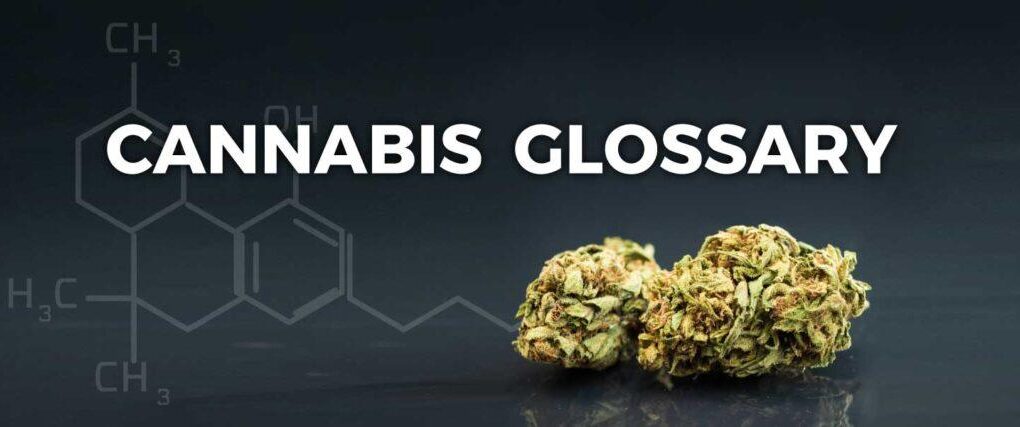In a world where the cannabis conversation is rapidly evolving, the lexicon of marijuana has expanded alongside its usage and cultural significance. What once was a clandestine community now buzzes with an array of terms that capture the nuances of this multifaceted plant and its myriad applications. From the budding enthusiast to the seasoned connoisseur, a shared language emerges—one that not only enriches understanding but also reflects the shifting attitudes toward marijuana in society at large. In this article, we will delve into the fascinating world of marijuana terminology, unraveling the meanings behind some of the most commonly used words and phrases. Whether you’re navigating the aisles of a dispensary or discussing strains with friends, knowing the lingo can deepen your appreciation and enhance your experience in this growing field. Join us as we explore the key terms that help shape our conversations about cannabis today.
Table of Contents
- Understanding Cannabis Lexicon for Enthusiasts
- Essential Terminology for Navigating the Marijuana Landscape
- Demystifying Strain Types and Their Effects
- Legal Language: Key Phrases for Advocating Cannabis Rights
- Q&A
- The Conclusion
Understanding Cannabis Lexicon for Enthusiasts
As you dive into the fascinating world of cannabis, it’s essential to familiarize yourself with the vernacular that permeates enthusiast conversations. Understanding this lexicon will enhance your experience and enable you to engage more deeply with fellow aficionados. Here are some key terms you should know:
- Indica: A strain known for its relaxing effects, perfect for unwinding after a long day.
- Sativa: A strain that typically provides uplifting and energetic effects, often associated with creativity.
- Hybrid: A blend of both indica and sativa strains, offering a balance of effects tailored to individual preferences.
- Terpenes: Organic compounds that influence the aroma and flavor of cannabis, as well as its effects.
- Cannabinoids: Chemical compounds in cannabis that interact with the body’s endocannabinoid system, with THC and CBD being the most noted.
To further expand your familiarity with cannabis terminology, it can be helpful to understand some of the common cultivation and consumption methods. Here’s a quick overview:
| Method | Description |
|---|---|
| Vaporization | A method that heats cannabis to release active compounds without combustion. |
| Edibles | Food products infused with cannabis, providing longer-lasting effects. |
| Tinctures | Concentrated cannabis extracts mixed with alcohol or oil, taken sublingually for quick effects. |
| Concentrates | Highly potent extracts, including oils, waxes, and shatter, offering a stronger experience. |
Essential Terminology for Navigating the Marijuana Landscape
Understanding the marijuana landscape requires familiarity with key terminology that often arises in discussions around cannabis. Below is a selection of essential terms that will help you navigate this complex world:
- Indica: A type of cannabis known for its relaxing effects, typically used in the evening or before sleep.
- Sativa: A strain that tends to have uplifting and energizing effects, often preferred for daytime use.
- Hybrid: A blend of both indica and sativa strains, designed to provide a balance of effects.
- Cannabinoids: Chemical compounds within the cannabis plant, the most well-known being THC and CBD.
- Terpenes: Organic compounds that give cannabis strains their distinct aromas and also influence their effects.
To further clarify these concepts, consider the following simple overview of different cannabis strains and their general effects:
| Strain Type | Main Effect | Best Used For |
|---|---|---|
| Indica | Relaxation, Sleepiness | Nighttime and Pain Relief |
| Sativa | Euphoria, Increased Energy | Daytime and Creative Activities |
| Hybrid | Balanced Effects | Versatile Use |
Demystifying Strain Types and Their Effects
In the realm of cannabis, understanding the different strain types is essential for both novice and seasoned enthusiasts. The two primary categories encompass Indica and Sativa, with many users often leaning towards one depending on their desired effects. Indica strains are typically known for their calming, sedative effects, making them ideal for evening use. Conversely, Sativa strains often provide uplifting, energizing effects that many prefer for daytime consumption. Some strains blend both characteristics, known as hybrids, combining the mellowing qualities of Indica with the invigorating aspects of Sativa, resulting in a variety of unique experiences.
Each strain type carries distinct profiles, determined by their unique cannabinoid and terpene content. Cannabinoids, such as THC and CBD, can greatly influence the effects you may experience, while terpenes contribute to the aroma and flavor, creating a holistic experience. Here’s a brief overview of common strain types and their typical effects:
| Strain Type | Common Effects |
|---|---|
| Indica | Relaxation, sedation, pain relief |
| Sativa | Euphoria, creativity, focus |
| Hybrid | Balanced effects, varying depending on dominant strain |
Legal Language: Key Phrases for Advocating Cannabis Rights
The fight for cannabis rights is enriched by the use of precise legal terminology that can effectively advocate for reform. Legal professionals and activists alike should leverage a range of key phrases to communicate their intentions and objectives. Some of these phrases include:
- Decriminalization: The removal of criminal penalties for cannabis possession and use.
- Legalization: The process of making cannabis legal for recreational and/or medicinal use.
- Regulation: Establishing laws and guidelines for the cultivation, distribution, and sale of cannabis.
- Medical Marijuana: Cannabis prescribed by a physician to treat certain medical conditions.
- Social Equity: Initiatives designed to ensure that communities disproportionately affected by cannabis prohibition have fair access to the industry.
In addition, understanding the structure and framework of cannabis legislation can further strengthen advocacy efforts. Key terms and elements often found within legal documents include:
| Term | Definition |
|---|---|
| “Home Cultivation” | The allowance for individuals to grow cannabis plants for personal use. |
| “Tax Revenue Allocation” | How funds generated from cannabis taxes are distributed, often towards public programs. |
| “Cannabinoid” | The chemical compounds found in cannabis that interact with the body’s endocannabinoid system. |
| “Medical Use Authorization” | A legal approval granted by a healthcare professional for a patient to use cannabis medicinally. |
Q&A
Q&A: Decoding Marijuana Terms
Q: What does ”cannabis” refer to?
A: “Cannabis” is the botanical name for the plant from which marijuana is derived. It encompasses various strains and derivatives, including hemp and marijuana, highlighting the plant’s versatility in both medicinal and recreational contexts.
Q: What’s the difference between THC and CBD?
A: THC (tetrahydrocannabinol) and CBD (cannabidiol) are two of the most well-known compounds found in cannabis. THC is psychoactive, meaning it produces the “high” associated with marijuana. Conversely, CBD is non-psychoactive and is often sought after for its potential therapeutic benefits without the mind-altering effects.
Q: What are “strains” in the world of cannabis?
A: “Strains” refer to the specific varieties of the cannabis plant, each boasting unique profiles of cannabinoids and terpenes. Common strain categories include Indica (relaxing effects), Sativa (energizing effects), and Hybrid (a mix of both), allowing users to find the right fit for their needs.
Q: What does “terpene” mean, and why is it important?
A: Terpenes are aromatic compounds found in cannabis and many other plants, contributing to their distinct scents and flavors. Each strain has a unique terpene profile that can influence effects and enhance the overall experience, making term understanding key for connoisseurs.
Q: What is meant by “edibles”?
A: “Edibles” are food products infused with cannabinoids, typically THC or CBD. They offer an alternative consumption method, providing long-lasting effects. Popular options include gummies, chocolates, and beverages, but consumers should be aware of dosing, as onset times and potency can vary widely.
Q: What does “dabbing” refer to?
A: “Dabbing” is a method of consuming concentrated cannabis extracts called wax, shatter, or oil. The process involves using a dab rig or a specialized device to heat the concentrate, which produces vapor for inhalation. It’s known for delivering a potent experience, appealing to seasoned users.
Q: Can you explain what “microdosing” is?
A: “Microdosing” involves taking small amounts of cannabis to achieve desired effects without the intense high that comes from larger doses. This approach is popular among those seeking symptom relief such as anxiety or pain while maintaining clear-headedness in their daily activities.
Q: What are “buds”?
A: “Buds” refer to the flowering part of the cannabis plant, which is typically harvested for consumption. The quality of buds is measured by appearance, aroma, and trichome coverage, impacting potency and overall experience.
Q: What is the significance of “curing”?
A: “Curing” is a crucial process of drying and aging harvested cannabis buds. It enhances flavor, aroma, and potency while reducing harshness when smoked or vaporized. Proper curing can elevate the quality of cannabis, making it more enjoyable for consumers.
Q: What does “full-spectrum” mean?
A: “Full-spectrum” refers to cannabis products that contain a wide range of cannabinoids, terpenes, and other beneficial compounds. This holistic approach is believed to enhance the therapeutic effects through the “entourage effect,” where various compounds work synergistically for greater benefits.
By understanding these essential marijuana terms, both novice and experienced users can navigate the cannabis landscape with greater confidence. Whether for recreational enjoyment or medicinal relief, a grasp of the vocabulary enhances the overall experience.
The Conclusion
As we draw the curtain on our exploration of marijuana terminology, it becomes clear that this evolving lexicon mirrors the shifting perceptions and realities of cannabis culture itself. From the casual connoisseur to the curious newcomer, understanding these terms is key to engaging in informed conversations about the plant and its myriad uses. Whether you’re delving into the nuances of cannabinoids, deciphering the latest slang, or simply seeking clarity in a rapidly changing landscape, a firm grasp of marijuana language can enhance your experience and knowledge. As you continue your journey, remember that language is a bridge—one that connects communities, fosters understanding, and cultivates awareness. So, whether you’re vibing at a dispensary, sharing stories with friends, or researching for personal growth, let this newfound vocabulary guide you along the way. Here’s to expanding minds, enriching dialogues, and a future where cannabis is embraced with understanding and respect.



